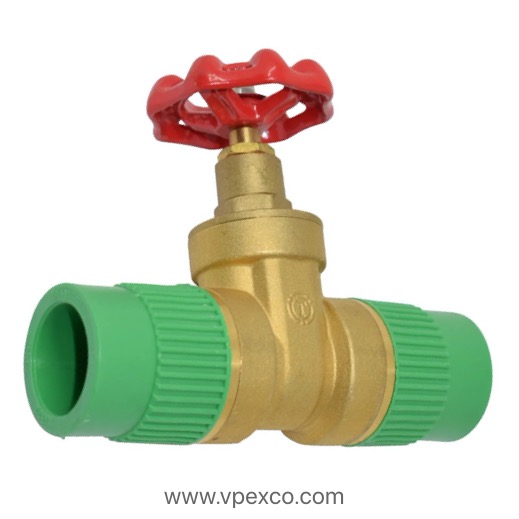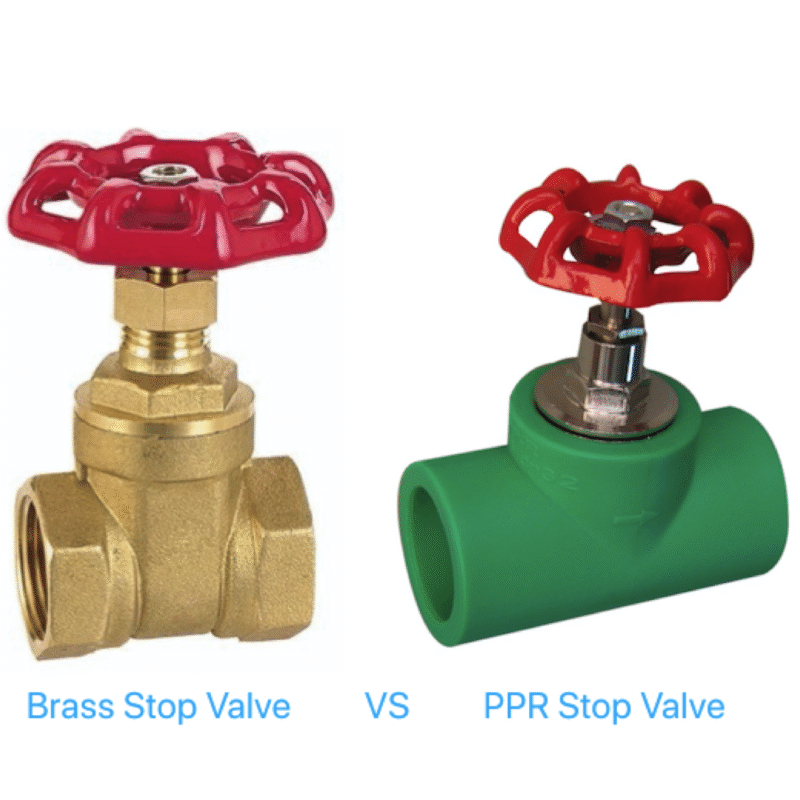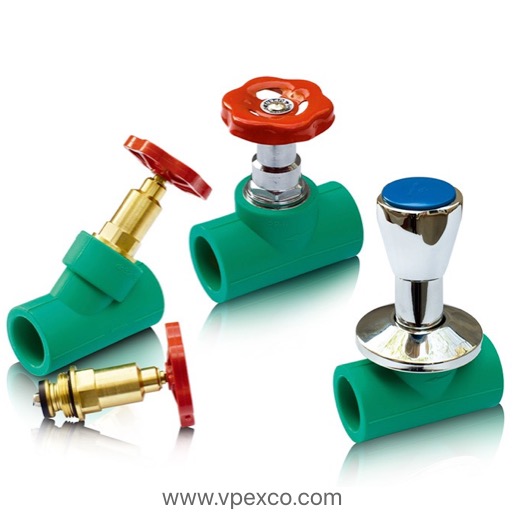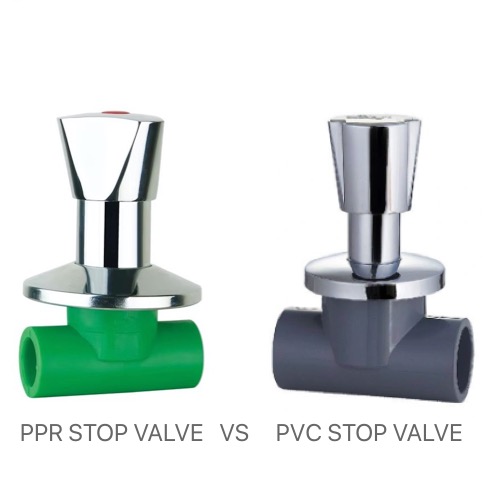Gate valve types often confuse buyers — especially when choosing between PPR, brass, or cast iron options.
A PPR gate valve is a plastic shut-off valve used in PPR piping systems, designed to control high-volume water flow in residential and commercial pipelines.
I get this question often from clients working on large water projects: “Should I use a PPR gate valve or just stick with ball valves?” The answer depends on the flow, pressure, and system design — and understanding the valve’s structure is the first step.
What are the three types of gate valves?
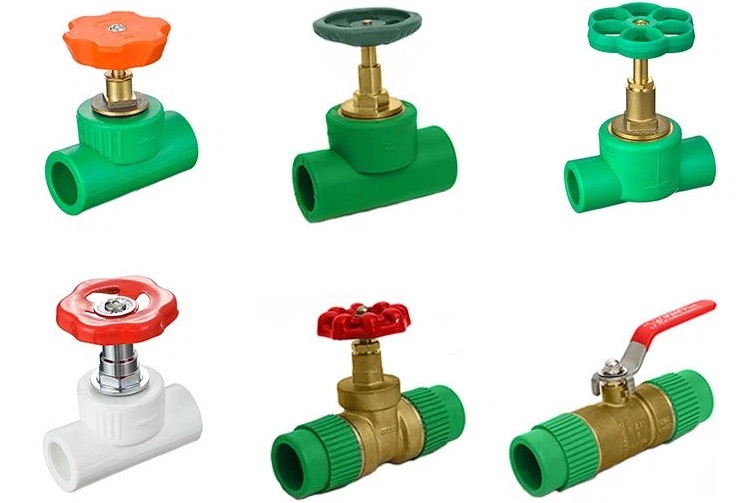
types of PPR valves
Not all gate valves are the same — each type has a different internal structure and application.
The three main types of gate valves are: parallel gate valves, wedge gate valves, and knife gate valves.
Let’s break each one down simply:
1. Wedge Gate Valve
This is the most common type. It has a solid, wedge-shaped disc that presses between two seats to stop the flow. It provides a strong seal and is good for both hot and cold water systems.
- Pros: Good sealing, durable, reliable shut-off
- Cons: Prone to jamming with debris
2. Parallel Gate Valve
This type has a flat gate and two parallel seats. The gate slides straight down between the seats. It uses system pressure to push against the seat and seal the flow.
- Pros: Less friction, easier to open and close
- Cons: Weaker sealing under low pressure
3. Knife Gate Valve
Designed for systems with thick or dirty media (like sewage or slurry), the gate is thin and sharp, cutting through solids.
- Pros: Great for viscous fluids or waste
- Cons: Not suitable for clean water systems
Table: Comparison of Gate Valve Types
| Type | Best For | Sealing Strength | Maintenance |
|---|---|---|---|
| Wedge Gate | Water pipelines | Strong | Moderate |
| Parallel Gate | Low-pressure water | Medium | Low |
| Knife Gate | Waste/slurry systems | Weak (for solids only) | High |
In PPR systems, wedge gate valves are the most commonly used type because they offer strong flow control and sealing for water distribution.
What does PPR mean?

Every new buyer eventually asks: what exactly is PPR — and how is it different from PVC?
PPR stands for Polypropylene Random Copolymer, a type of plastic material used in pressure piping systems for hot and cold water.
PPR is popular in plumbing systems due to its durability, heat resistance, and corrosion-proof structure. It’s welded using a heat fusion method that permanently bonds the pipe and fittings together — no threading, gluing, or clamping needed.
Key Benefits of PPR:
| Feature | Benefit |
|---|---|
| Heat Resistance | Up to 95°C |
| Long Service Life | 20–25 years under normal conditions |
| Chemical Resistance | No rust, scaling, or corrosion |
| Thermal Insulation | Low thermal conductivity |
| Safe for Drinking Water | Non-toxic, hygienic |
I remember one of our clients in Poland who replaced a steel system with PPR. He later told me: “The installation was faster, no leaks, and the customer loved the clean look.” That’s the impact of choosing the right material.
What is a PPR Gate Valve?
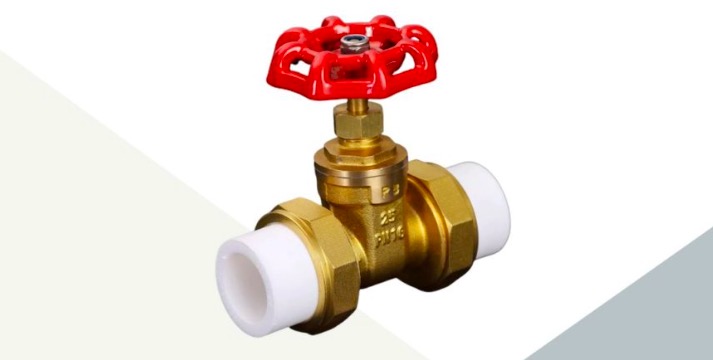
PPR gate valve product
If you're using PPR pipe, you need matching valves. But many don’t know that gate valves also come in PPR.
A PPR gate valve is a shut-off valve made from polypropylene random copolymer, used to fully stop or fully open water flow in a PPR piping system.
Unlike a ball valve, a gate valve isn’t for flow adjustment — it’s either open or closed. The internal gate moves up and down to allow or block water. This is useful in main lines or systems that need full-volume flow.
Features of PPR Gate Valves:
| Property | Description |
|---|---|
| Body Material | Polypropylene Random Copolymer |
| Sealing Components | Often uses brass or stainless inserts |
| Working Temperature | Up to 95°C |
| Pressure Rating | PN16 or PN25 |
| Connection Type | Socket welding (heat fusion) |
| Valve Type | Typically wedge type |
Use Cases:
- Main pipelines: Perfect for controlling large water lines in residential buildings
- Heating systems: Handles high-temperature fluid with thermal stability
- Irrigation: Large-scale farms prefer gate valves for steady, full-flow delivery
Comparison: PPR Gate Valve vs PPR Ball Valve
| Feature | Gate Valve | Ball Valve |
|---|---|---|
| Function | Full-open or full-close only | Quick on/off control |
| Flow Control | Smoother flow (less turbulence) | Slight pressure drop |
| Price | Usually higher | Usually lower |
| Application | Large volume, central control | Local shut-off, frequent use |
In my own sourcing experience, many buyers choose ball valves simply because they’re cheaper. But once you explain the technical function and longer lifespan of a gate valve in large water lines, most professionals are happy to upgrade.
A PPR gate valve is the best choice when you need reliable shut-off in a high-flow PPR system. Understand its role — and you’ll never install the wrong valve again.
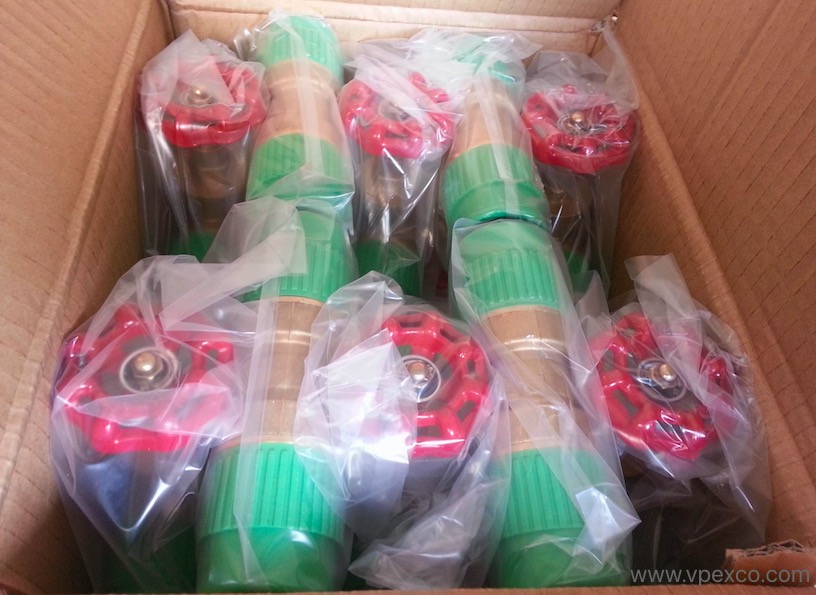
PPR gate valve packing



